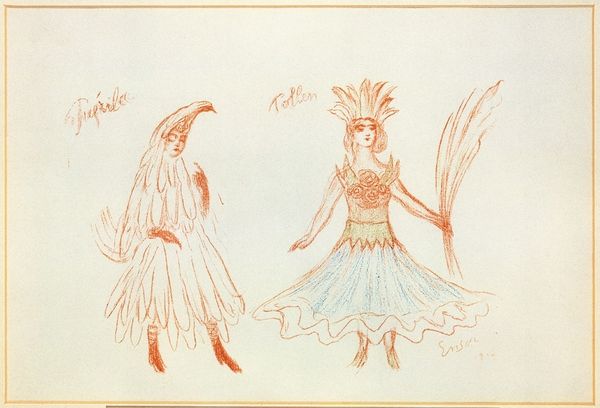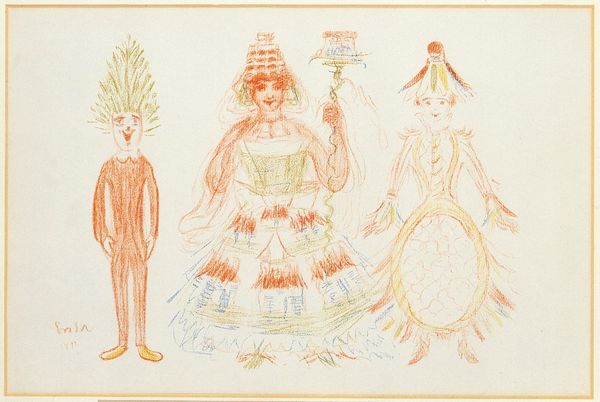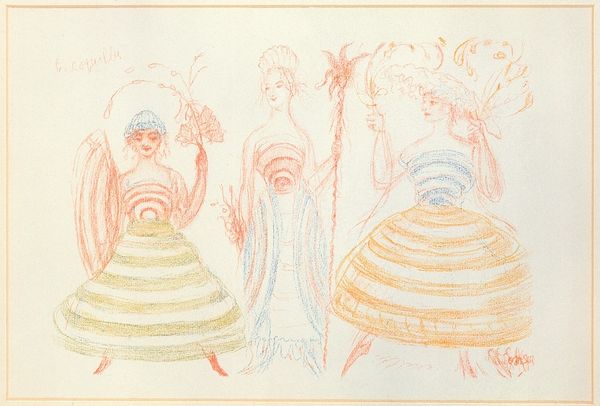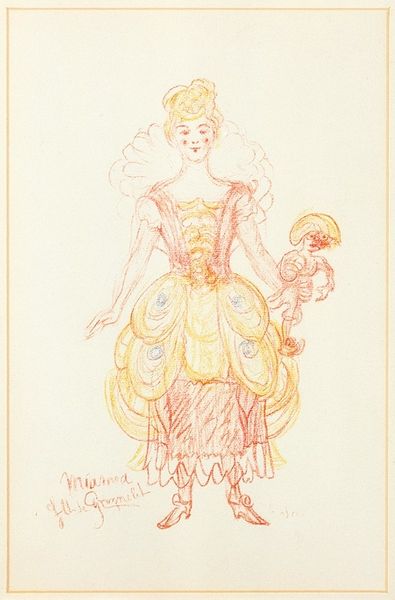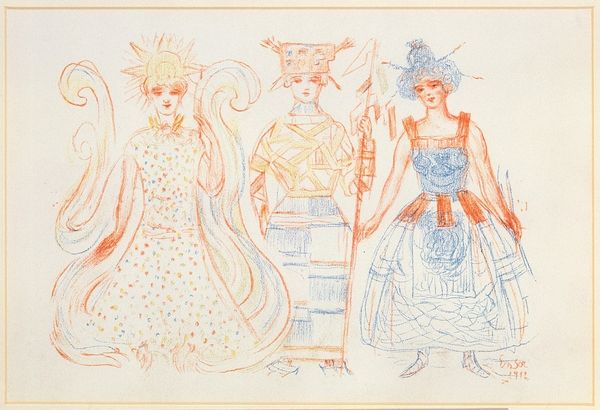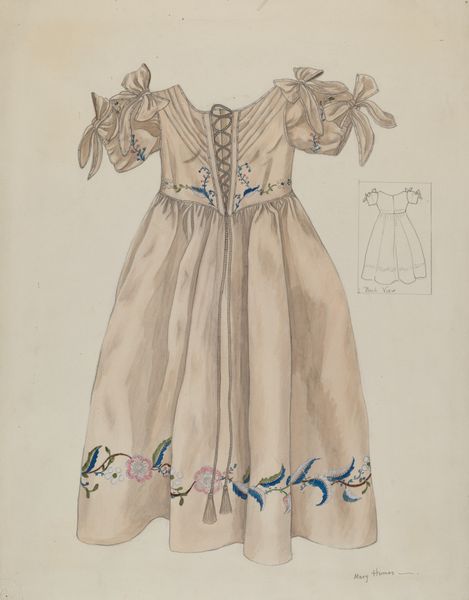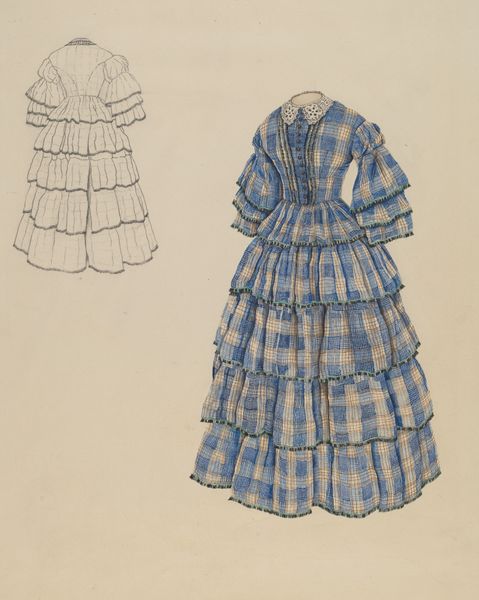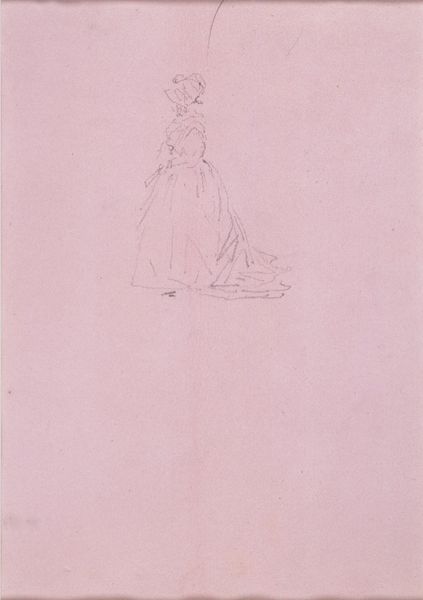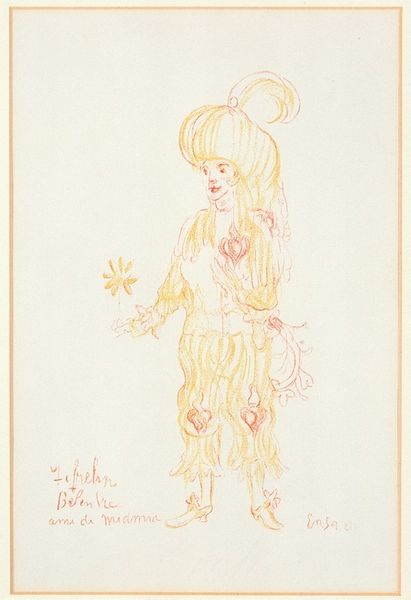
Copyright: Public Domain: Artvee
Editor: So, this drawing is called "Popofigue & Germina," created in 1929 by James Ensor using pencil and colored pencil. It looks like a costume design, and the figure on the left reminds me of harvest or summer. What do you see in this piece? Curator: Immediately, I'm drawn to the material choices – the colored pencils and paper itself. Ensor’s decision to employ these everyday, almost childish materials, destabilizes traditional art hierarchies. The roughness of the pencil work, the visible texture of the paper - these elements underscore the *making* of the art. The subject, ostensibly figuration, becomes secondary to the process of its creation. What can these figures tell us about material scarcity and creative choices during the interwar period? Editor: That's an interesting point! I was so focused on the figures themselves, especially the "Germina" figure appearing like a sheaf of wheat, a commentary on rural life perhaps, I didn't really consider why he chose these specific materials. Curator: Exactly. Consider the socio-economic context. During this time, traditional notions of art and its consumption were being challenged. By using readily available, inexpensive materials, Ensor democratizes the artistic process. Is he perhaps critiquing the elitism often associated with "high art"? What does mass production and materiality mean to his portrayal? Editor: So you’re saying it's not just *what* he's depicting but *how* he’s depicting it, with these specific materials, that's really important? That shifts my understanding completely. Curator: Precisely! Ensor highlights the labor and material conditions inherent in artistic creation itself. He's making us question where "art" really resides – in the subject, the artist's hand, or the social context of its making? Editor: Wow, I’m now thinking about how even the "humble" materials contribute to a much richer statement about art production and access. Curator: Yes, seeing art through the lens of materials can provide valuable insight into social commentary.
Comments
No comments
Be the first to comment and join the conversation on the ultimate creative platform.
